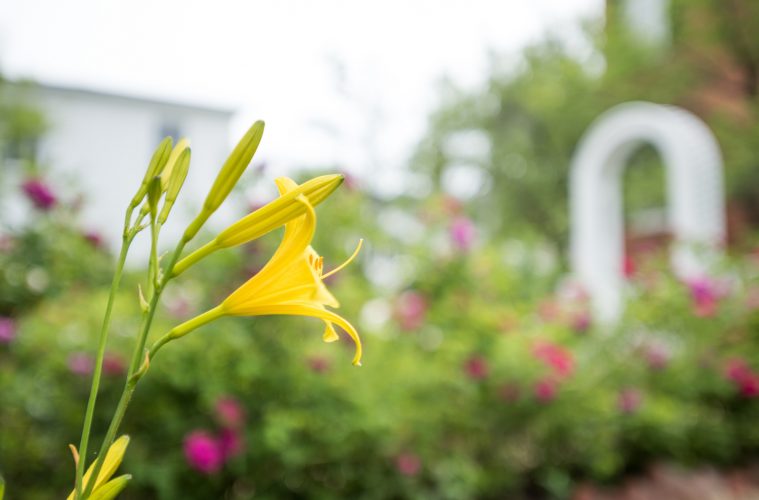By all definitions, Newburyport is a close-knit community. Not only are the residents chummy, but also the houses hunker cheek by jowl with their neighbors. The Cushing House is no exception. Tucked into a tight grid of side streets, the staid three-story brick building could easily escape your notice as you whiz past. Even on foot, you would probably pass the fenced yard unaware of what lies within, except when the roses are in full blossom. Then the redolence wafting from hundreds of full-blown blooms gives away the 150-year-old garden’s breathtaking blowsy presence.
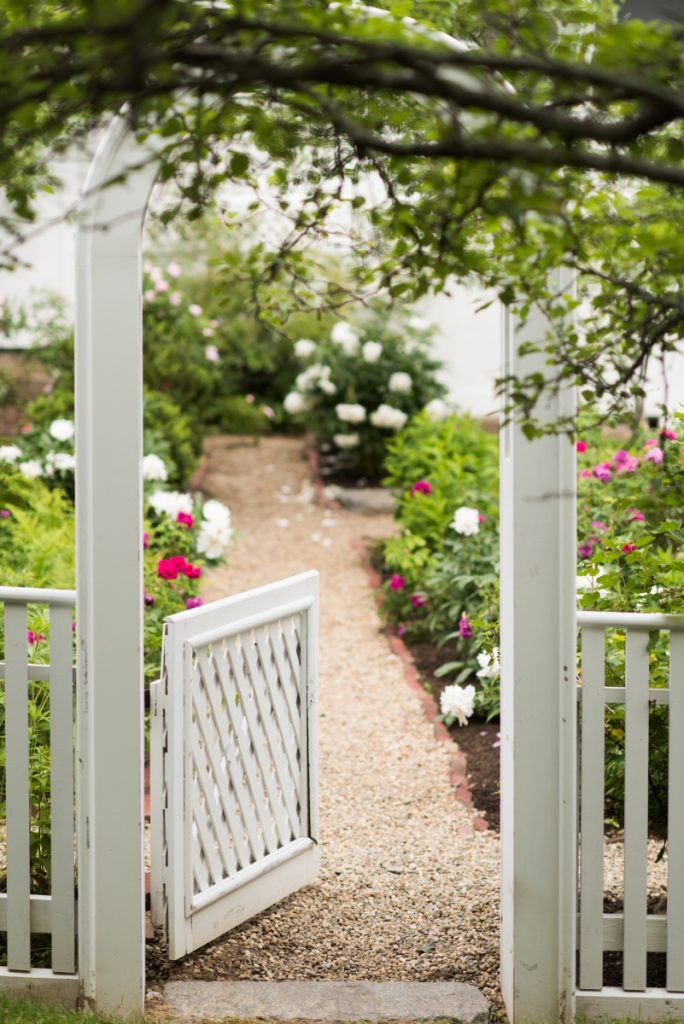
Remarkably, the perfume that floats from the garden now tended by Newburyport’s Museum of Old Newbury is probably not far removed from the fragrance produced by these flower beds in the 1870s. That was the year the Cushings began planting their rose collection, over 50 years into their family’s tenancy in the home.
Originally from a seafaring family (like many of the town’s early residents), Captain John Newmarch Cushing took up residence in the Federal-style house in 1818, just 10 years after it was built, sharing the home with the widow of the original owner. In 1823, he bought the entire house, and the Cushing family—at one point including Caleb Cushing, mayor of Newburyport, U.S. congressman, attorney general, and U.S. ambassador to China—lived on the property until 1955, when Margaret Cushing (niece of Caleb Cushing) passed away at the age of 100. During their time in the house, the Cushings brought their international knowledge of plants and gardening trends to bear. The result was a lush garden that eventually expanded to outgrow its postage stamp–sized property. However, accommodating their plant penchant in intimately-populated Newburyport took a little creative maneuvering.
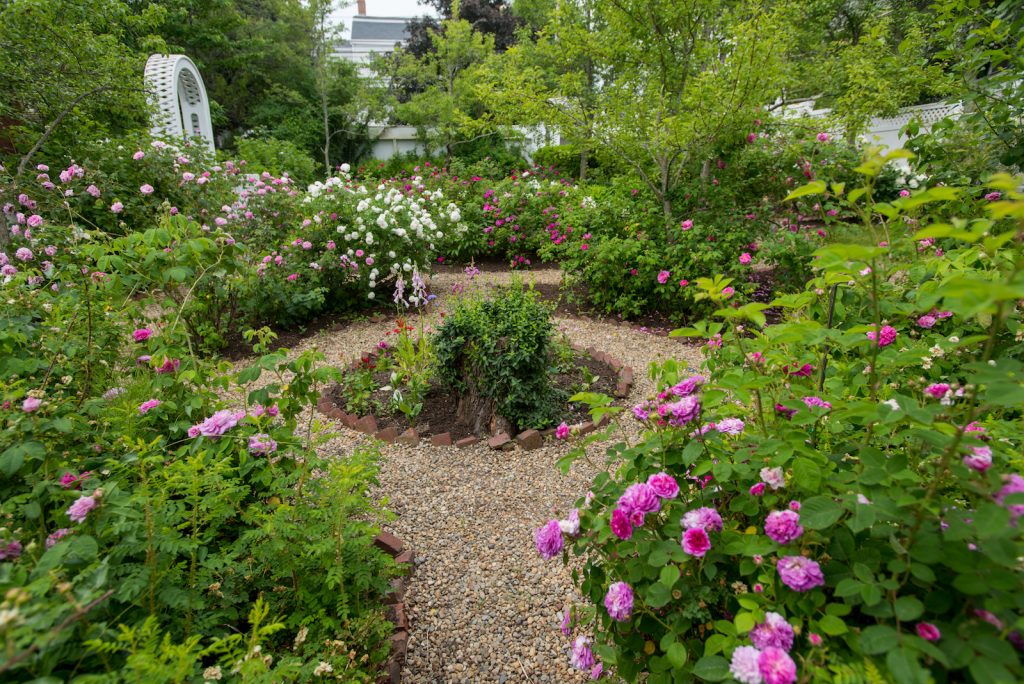
The answer to this conundrum was to purchase the neighboring property, which gained the garden-fixated Cushings a corridor of land. That house, minus the adjoining land, was then sold, and an inconveniently sited carriage house was moved, together with its cart path, to make room for plantings. That modest sliver of land allowed the Cushings to lay out an expanded plan including a robust orchard, in addition to a formal configuration of beds, planted on a slight angle to follow the skewed property line. The resulting garden was so seductive that it fascinated decades of residents and eventually sparked a restoration project, spearheaded in 1998.
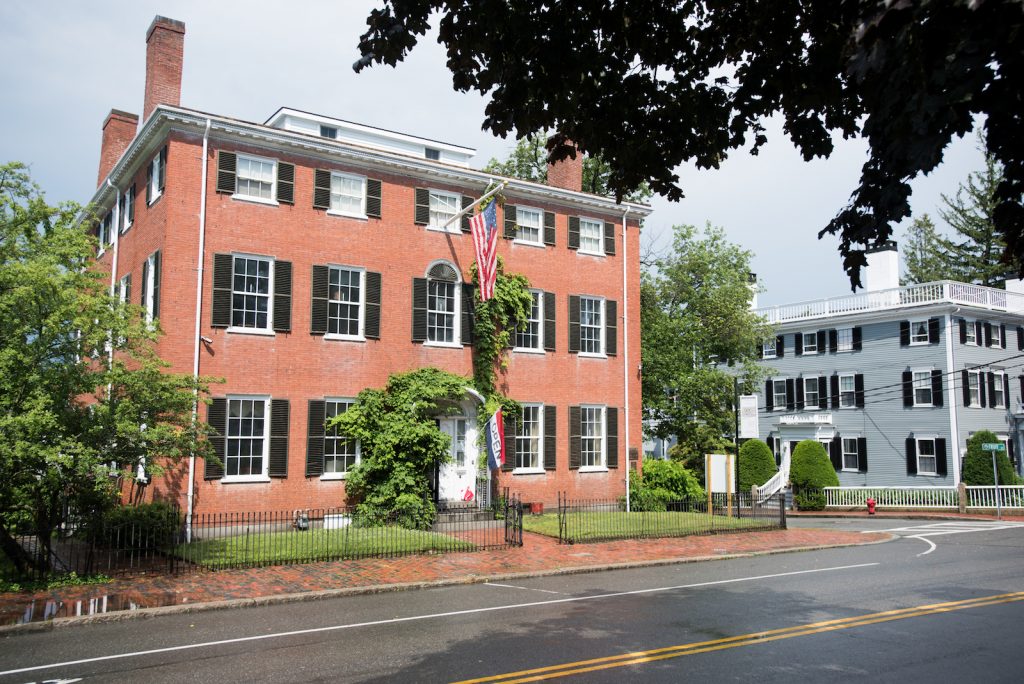
Not many gardens can boast the level of stewardship lavished on the plantings around the Cushing Place. And there are not many opportunities to experience a garden with similarly deep roots. Although the plantings have seen their fair share of hard times, the cherry, apple, pear, and plum trees have survived throughout the decades, and still bear fruit that is used to make scrumptious jams. In particular, two original blood peach trees continue to produce fruit with a pallid exterior but red, juicy flesh within. This unique fruit was such a boasting point for the Cushings that they demanded the return of the peach pits from any fruit purchased to ensure their monopoly on the oddity.
For other parts of the garden, researchers have scoured documents and unearthed receipts to discover and replicate what was grown years ago. Scholars including Betsy Ware, famed horticultural historian Isadore Smith (who wrote under the pen name of Ann Leighton), and Lucinda Brockway of Past Designs have all consulted on the restoration to help bring back the ambiance created in the garden years ago. Layers of history have been carefully curated. Over the decades, the family’s input has been sought and respected. For example, Margaret Cushing worked with architects in 1934 to build a more ornate and idiosyncratic Gothic garden pavilion where an old lattice shed once stood. She also designed a Gothic garden seat to cap the axis toward the Perkins Printing and Engraving Plant, a neighboring building also known as “The Mint” that once printed currency, and that was acquired by the museum in 2008.
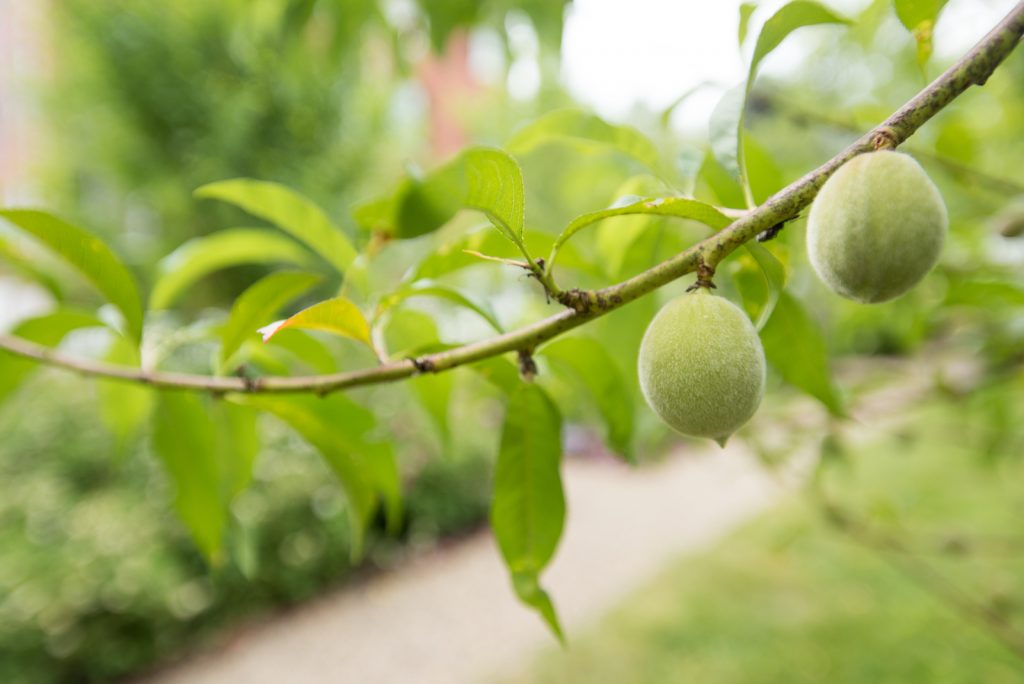
As any passing pedestrians will attest, the roses of yesteryear are very much a part of the allure. Although the current collection is not labeled, many old roses remain. As for their identity, an 1877 rose order of 27 different varieties included roses with intriguing names like ‘Glory of Mosses,’ ‘Leon of Bornbats,’ ‘Giant of Battles,’ and ‘Zebrinna’ that are no longer in cultivation. Whether those particular roses are in residence, nobody is quite certain. But original or not, the intoxicating fragrance of the many roses fills the air in early summer, just as it did for neighbors in this seaside town more than a century ago.
Similarly, many herbs still grow on this retrospective acre, accompanied by sweet Williams, hollyhocks, currants, ornamental quince trees, and Concord grapes—all blasts from the past. A wisteria vine crowning the front door announces spring, a row of lilac bushes mingles with the early dianthus to perfume the paths, the musky-scented leaves of catmint are crowned with blossoms in summer, and the pineapple-tinged blossoms of the calycanthus shrub reward anyone who breathes in their sweet fragrance, in addition to the famed fruit trees that bear their bounty throughout summer. This garden touches your senses on all levels.
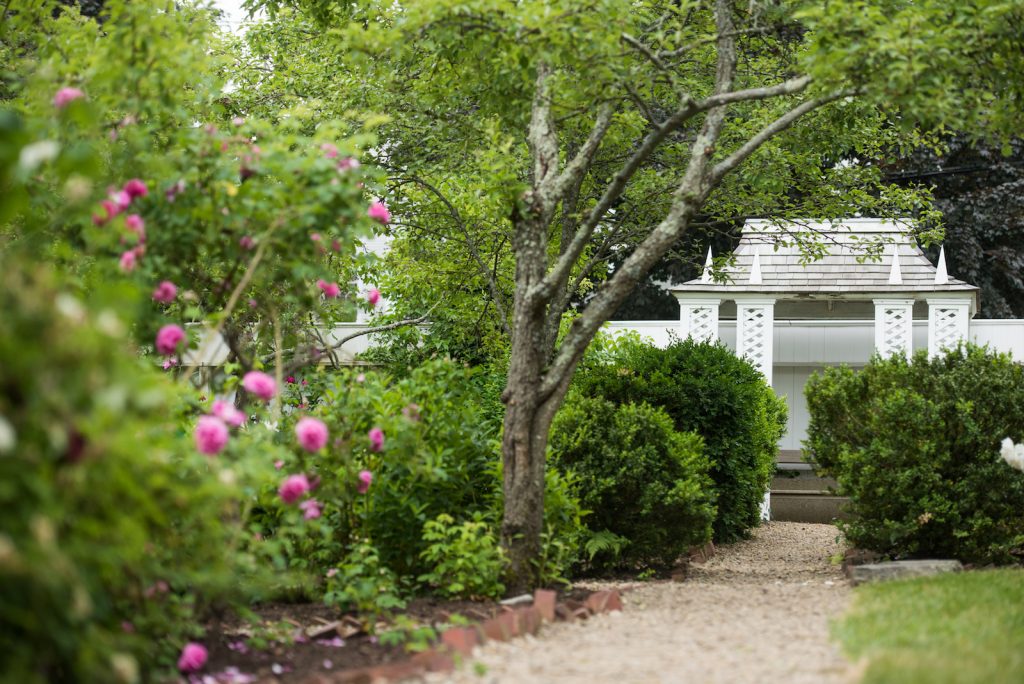
When the museum is open, visitors can peruse the holdings and learn from the collection. They can study photos of Newburyport and gain insights into a bygone time. But there is also an immediacy to this encounter with history. Nothing equals the experience of breathing the actual scents of yesteryear and watching birds steal the same cherries that nurtured winged Newburyport residents generations ago. A century-old pair of variegated hostas still send up their fragrant flowers. Currants that were served at the breakfast table continue to produce their crop of glistening fruit. Ghostly white peonies still perform every spring. And you are invited to walk into the cobblestone courtyard (slated to be renovated soon), stroll the gravel paths, and experience the same sensations that delighted Newburyport citizens of the past. On this very special acre of land, a bounty of history is preserved in a small space.

